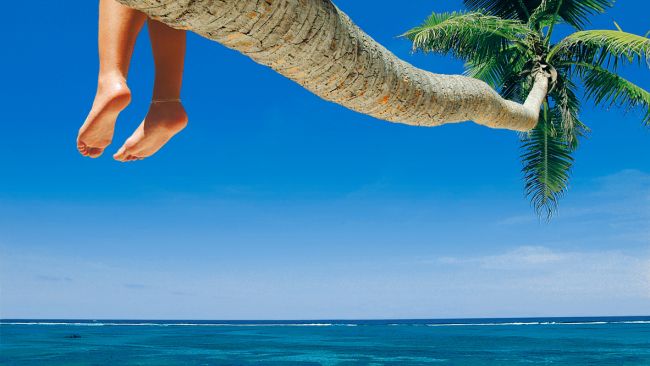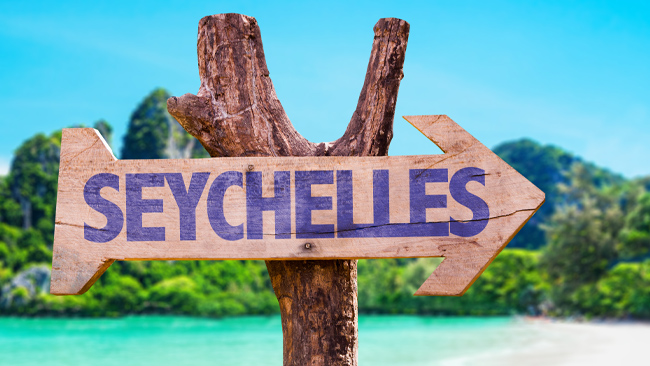Seychelles Culture, Customs, and Traditions

The least populated sovereign country in Africa, Seychelles, has slowly begun to take its place amongst other African countries after being known for their warm personalities and increased tourist activity, especially after the pandemic in 2020.
Seychelles is an archipelago of about 115 islands in East Africa on the Western Indian Ocean. The country has two main island groups: Mahé group, comprised of more than 40 mountainous islands located towards the country’s center, and a second group known as Praslin, with more than 70 flat coralline islands on the outer banks.
The Seychellois are particularly popular for the country’s unique diversity and even more for their culture, enriched very deeply by African, Asian, and European influence, which It has managed to meld in a very harmonious manner.
Seychelles Population
 Even while experiencing massive growth in the past few years, the population of Seychelles is only a minuscule 99,967 making them one of the least populated African countries. Still, it is very understandable due to the size of the country.
Even while experiencing massive growth in the past few years, the population of Seychelles is only a minuscule 99,967 making them one of the least populated African countries. Still, it is very understandable due to the size of the country.
Of the 115 islands that make up the country, eight (8) are inhabitable. Most of the country’s population lives on the main island, Mahé, followed by Praslin and La Digue.
Listed below are the significant ethnicities in Seychelles:
- Seychellois Creole: accounts for about 90% of the total population on the Islands, and Seychellois are said to be people of mixed origin, which may include French, British, Middle Eastern, Chinese, and African roots.
- Indo-Seychellois: this is a minority ethnic group of people of Indian descent who comprise about 6% of the total population. The majority of them are Hindus who hail from Tamil Nadu. Others include Indian Jains, Muslims, Christians, etc.
- Sino-Seychellois: also a minority ethnic group, these Chinese immigrants moved from Mauritius to the island in the 18th century. Their population is estimated at 1,000 individuals, which makes them one of the minor Chinese groups in Africa.
Religion
As a country influenced by multiple cultures and different societies, it is common knowledge that the populace practices a multitude of religions. This is allowed by the Seychelles government, as the constitution guarantees the freedom of religion and expression. It is also important to note that the Seychelles government doesn’t favor any religion. There is freedom of expression and choosing the religion of one’s choice without pressure from the government or people.
Most people in Seychelles practice Christianity. Roman Catholicism is the largest denomination in the country (82% of the population), with other minor denominations like the Anglican Church (6.4% of the population), Seventh-day Adventists, Pentecostals, and various Protestant denominations also present.
The second largest religion in Seychelles is Hinduism, which can be credited to the Indo-Seychellois populace of the country. They make up around 2.5% of the Seychellois population, closely followed by Islam, which is practiced by about 1.6% of the population, about 900 people.
Family Life in Seychelles
In contrast to most African countries, the Seychelles basic family unit is matriarchal, and the woman holds superior status to the man in the working class. But while women control many of the economic resources in the homes, domestic violence is still quite common, especially with women being on the receiving end.
In Seychelles, education is highly valued, and families are encouraged to give their children an opportunity to get a good education. The Seychelles government provides free education for children until they reach the age of 18, and families are urged to enroll their children.
Seychelles is a country that prioritizes community and social cohesion, which is evident in how families connect. Weddings and funerals are crucial family gatherings and festivities, and families frequently assemble to celebrate and support one another.
Art and Architecture of Seychelles
As a group of islands influenced by European, Middle Eastern, Asian, and African traditions, the art and architecture of Seychelles bear a unique touch that can only be found in a country with many multiethnic influences acting upon it.
One of the most critical aspects of Seychellois arts is music and dance, which are essential to their tradition. An example is Moutya, a traditional dance initially started during the slave trade era to signify resisting servitude and social injustice.
It resembles Sega but contains more energetic and suggestive dance steps.
The impact of colonialism on Seychelle’s architecture is indelible; listed below are some of the unique architectures in the country.
- Creole architecture: This is a style of architecture that is unique to Seychelles, and it combines elements of African, French, and British architecture. The houses are made of wood and have steep roofs, wide verandas, and colorful shutters. They are painted in bright colors such as pink, blue, and green, while the shutters are painted in contrasting colors to provide a decorative touch.
- French colonial architecture: Seychelles was a French colony from 1756 to 1814. The influence of French colonial architecture can still be seen in buildings such as the Seychelles Supreme Court and the Clock Tower in Victoria.
Seychellois Food
Seychelles is a part of the world with a distinct cultural mix, evident in its cuisine. Seychellois cuisine is a fusion of African, French, Indian, and Chinese cuisines, with many regional specialties. The following are some examples of Seychellois specialties:
- Poison ek Diri: is a traditional dish from Seychelles that translates to “poison and rice,” To most, it is the most popular dish in the country and consists of a fish called the lionfish, cooked and served with rice.
- Grilled fish: Seychelles is known for its local fish, and grilled fish is among the country’s most famous dishes. Typically, the fish is braised in a combination of Creole spices before being grilled to perfection.
- Octopus Curry: Fresh octopus is cooked in a spicy curry sauce and served with rice or breadfruit.
- Ladob: A sweet dish with bananas, sweet potatoes, and coconut milk. The ingredients are combined and cooked until a thick, creamy substance forms, flavored with vanilla and cinnamon.
- Shark chutney: made from smoked shark flesh, grated coconut, and a spice blend. Chutney is traditionally eaten with rice or toast.
Fashion in Seychelles
Like every aspect of this country, the people’s fashion is also heavily influenced by many multicultural traditions, stretching from Africa to Asia and even Europe.
Koste is a traditional looping skirt worn by women in Seychelles. A rectangular cloth is wrapped around the waist and fastened at the side to make the skirt. The fabric is typically vividly colored and patterned, and it can be manufactured from a range of textiles such as cotton, silk, and synthetic mixes.
It is generally paired with a blouse or shirt, a shawl or scarf, and jewelry such as necklaces, bracelets, and earrings. The skirt is an essential aspect of Seychellois culture and is frequently worn at weddings, festivals, and cultural events.
Kazak and Penwar are traditional Seychelles men’s dress styles. A kazak’ is a loose-fitting shirt made of lightweight cotton or linen. It is frequently created in bright colors and is worn untucked.
A penwar is a pair of pants worn with a Kazak shirt. The pants are loose-fitting and comfy, with an elastic waistband or drawstring fastening. Penwar’s are often composed of lightweight cotton or linen fabric and can be simple or patterned.
Seychelles Holidays and Celebrations
 Below are some of the most significant holidays and celebrations in Seychelles apart from the standard set of holidays known and celebrated worldwide.
Below are some of the most significant holidays and celebrations in Seychelles apart from the standard set of holidays known and celebrated worldwide.
- Seychelles Carnival, which takes place in April
- National Day (June 18): National Day celebrates Seychelles’ culture and identity, marked with music, dance, and traditional food.
- Independence Day (June 29)
- Festival Kreol (October): Festival Kreol celebrates Seychellois Creole culture
- Sub Indian Ocean Seychelles (SUBIOS) underwater festival takes place in November.
Common Seychellois Language Expressions and their Translation
Seychelles Creole is the most spoken language in the country and the best and most advisable way to connect with the local audience. Below are a few terms to get you started:
- Bonjour – Good morning
- Bonswa – Good evening
- Ki manyer? – How are you?
- Mersi, monn byen – Thank you, I’m fine
- Ala manyer! – What a way! (Expression of surprise or shock)
- Ala sa – Look at that (expression of surprise or admiration)
- Ala mannyer, I kraz – What a way! /it’s broken! (Expression of frustration or disappointment)
- Danvan – Crazy
- Sa mannyer – That way (expression of agreement)
- Ki nom ou? – What’s your name?
- Monn lir sa – I read that (expression of surprise or interest)
- Ala sort – What kind (expression of curiosity or interest)
- Monn ariv – I arrived
Doing Business in Seychelles
While Seychelles has a rapidly growing economy and a booming tourist scene, there are some essential things to note before starting and maintaining a business there.
- Legal requirements: Register with the Seychelles International Business Authority (SIBA) before starting anything. You will also need to obtain licenses or permits for your specific industry.
- Taxation: Seychelles has a favorable tax environment for enterprises, with no corporate tax, no capital gains tax, and no dividend withholding tax. Businesses must, however, pay an annual license fee and Value Added Tax (VAT) on goods and services.
- Workforce: With a population of roughly 98,000 people, Seychelles has a modest workforce. On the other hand, the country has a high literacy rate and a booming tourism economy, which provides work opportunities in hospitality and associated fields.
- Infrastructure: the country has some transportation and communication issues, particularly for firms outside the main island of Mahé.
- Language: Despite English being the primary language for business French and Seychellois Creole are also extensively spoken in Seychelles
Translating for the Seychellois Market
For a small country like Seychelles with mixed cultures and ethnicities, here are a few things to look out for when translating for the Seychellois market.
- Language: The official languages of Seychelles are English, French, and Seychellois Creole. English is widely spoken and understood, but using French or Creole (spoken by 95% of the population) may be more effective for reaching local customers.
- Cultural context: understanding local customs and values is essential in creating marketing materials that resonate with Seychellois audiences.
- Visuals: Seychellois culture is very visual (a lot of the art in the country is filled with vibrant and bold colors), and using high-quality images and videos can be a powerful way to engage with local customers.
Conclusion
The Seychellois culture is a very beautiful and unique one. Continuously exploring the archipelago is the best way to learn more about the people and the country.
Every brand offering service to this market should localize its material for the Seychellois market. E.g., you can increase your chances of success by translating into French and Seychellois creole, product packaging, etc. While it may be tempting to use online tools for translation, it is strongly recommended that you consult translation service professionals to support your translation requirements accurately.
References:
